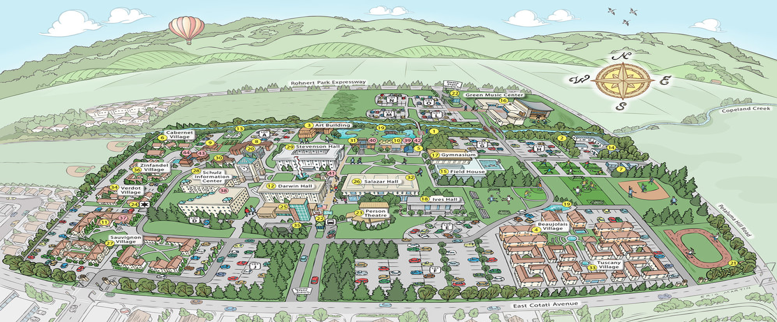On October 4th, 2019, twelve of us from Restoration Ecology met with Tom Tolliver from Sonoma Land Trust (SLT) at one of SLT’s sites that neighbors the Sonoma Raceway. The goal of the day was to remove decommissioned irrigation lines that fed encouraged riparian vegetation plots.

Photo©: Corbin Matley
Tom first gave us a quick rundown of the site’s history at part of the Sonoma Land Trust and where exactly we would be working, a slightly isolated segment upstream of the road access to the stream. After the briefing, we followed Tom in our very comfortable 4WD SUVs. After some more briefing and a warning to be on the lookout for a distressed mother cow, we split into two teams; left bank and right bank.
Moving upstream, Tom pointed out a number of features implemented and engineered by SLT. These features included rocks secured into areas of the creek vulnerable to erosion, and many oak trees protected by fencing and fed by irrigation lines. These were the lines we would be removing. Most of these features and efforts are intended to prevent the erosion and deterioration of the riparian area around the creek. Cattle grazing is practiced in the surrounding grasslands.
We started removing the irrigation tubing by finding a line on the ground and pulling it up out of the vegetation. As we pulled up more and more line we tied the larger tubing in the smaller “spaghetti” lines that ran off the larger tubes to feed the trees.
After two or so hours of work, we stopped for some lunch. We used a nice shaded patch of grass under an oak tree by the road entrance. Lunch was still productive in that we got to hear about other SLT projects and properties from both Tom and Mariah Chastain, who is an intern at SLT.

Photo©: Corbin Matley
After some rest, my group returned to the left bank to finish pulling the irrigation lines. Along the way we noticed many large and intriguing spiders with very thick webs.

The work finished quickly after the second round of pulling. We brought the coiled and folded tubing back to the vehicles where we added them to the existing pile. After this the work was complete and we left the cite to return to campus.

Photo ©: Corbin Matley

Photo©: Jacob Andrews



